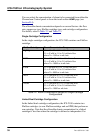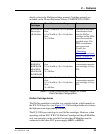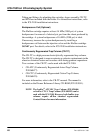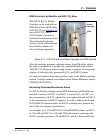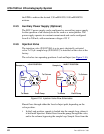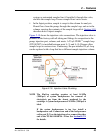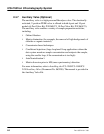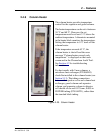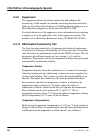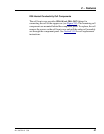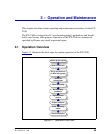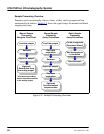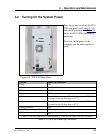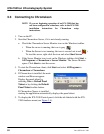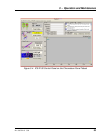
ICS-2100 Ion Chromatography System
46 Doc. 065291-01 3/09
2.4.9 Suppressor
The suppressor reduces the eluent conductivity and enhances the
conductivity of the sample ions, thereby increasing detection sensitivity.
Either an Atlas Electrolytic Suppressor, Self-Regenerating Suppressor, or
MicroMembrane Suppressor can be used with the ICS-2100.
For details about any of the suppressors or for information about selecting
a suppressor for your application, refer to the suppressor manuals. The
manuals are on the Dionex Reference Library CD-ROM (P/N 053891).
2.4.10 DS6 Heated Conductivity Cell
The flow-through conductivity cell measures the electrical conductance
of analyte ions as they pass through the cell. Two passivated 316 stainless
steel electrodes are permanently sealed into the PEEK cell body. The cell
design provides efficient sweep-out, low volume (1
μL), and low
dispersion. Temperature control and compensation help ensure good peak
reproducibility and baseline stability.
Temperature Control
Temperature directly affects the conductivity of a solution. For example,
laboratory heating and air conditioning systems can cause a regular slow
cycling in the baseline. This, in turn, can affect the reproducibility of an
analysis. The higher the conductivity, the more pronounced the effect.
In ion analysis, the effect of temperature variation is minimized by
suppressing eluent conductivity. To further reduce the effect of
temperature variation, a heater inside the cell regulates the temperature.
The cell heater can be set to between 30 °C and 55 °C. The set
temperature must be at least 7 °C above the ambient temperature. Setting
the cell temperature to 0 °C turns off the cell heater.
Temperature Compensation
Built-in preset temperature compensation of 1.7% per °C helps minimize
changes in the baseline or in peak heights when the operating temperature
is different from the temperature at which the cell was calibrated.



